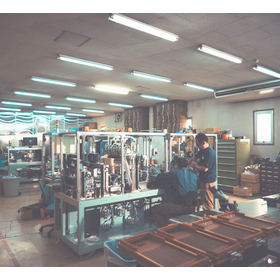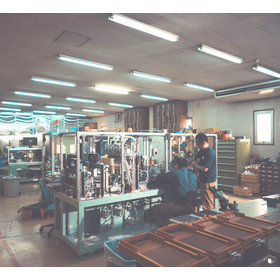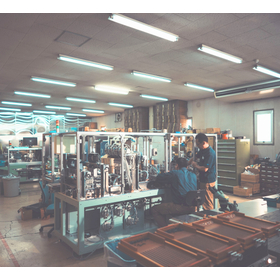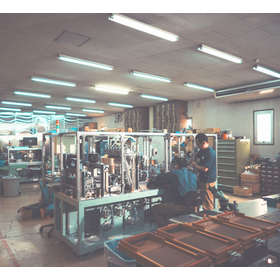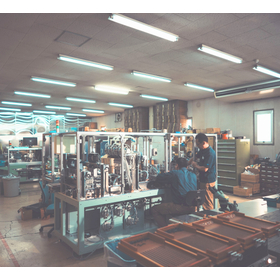Industrial Collaborative Robot Palletizer - Streamlining Operations
"Reducing heavy labor through automation" Achieving a safe, reliable, and speedy way of working.
A palletizer refers to a machine or system that automatically stacks products or goods onto pallets. It is used to achieve efficient palletizing in logistics and manufacturing. ■Improved Efficiency Palletizers are automated, allowing for the rapid processing of large quantities of products, thereby increasing the throughput of production lines. ■Reduction of Labor By introducing a palletizer, manual palletizing becomes unnecessary, reducing the burden on workers and lowering labor costs. ■Consistency and Accuracy The automated process ensures consistent stacking of products, reducing errors and uneven stacking. ■Enhanced Safety The risks associated with handling heavy loads are minimized, ensuring the safety of workers. ■Space Optimization Palletizers stack products on pallets in an optimal manner, maximizing the use of warehouse space. ■Improved Inventory Management Management by pallet units becomes possible, enhancing inventory visibility and making inventory management easier. ■Flexibility Robot palletizers, for example, can accommodate products of various shapes and sizes, allowing for flexible responses to changes in product lines.
basic information
■ By using robots, various patterns can be constructed. Depending on the type of cardboard cases (size, presence or absence of printing, orientation of printing, etc.), it is possible to sort and load onto pallets as required. Additionally, it is also possible to impose height restrictions to regulate the loading height as desired. Since safety fences around the equipment that includes robots are not necessary, it takes up less space and requires a smaller installation area, which is particularly appreciated by companies with limited installation space. To achieve safe collaborative work with humans, various sensor technologies are utilized. By installing human detection sensors, the robots can operate at speeds comparable to industrial robots under normal conditions, and when the sensors detect a person, it is possible to reduce the speed to that of collaborative robots. This overcomes the traditional weakness where collaborative robots were said to operate slower than industrial robots. ■ Due to labor shortages and the need to reduce labor costs, an increasing number of companies are considering the introduction of automated machines. Our company is also able to provide surrounding equipment, and our employees take full responsibility for everything from design, processing, assembly, electrical control, to installation at the delivery site. We will closely listen to our customers' requests and provide clear proposals.
Price range
Delivery Time
Model number/Brand name
SANADA
Applications/Examples of results
Collaborative robots are designed to complement or assist human tasks. They can support human work in lifting and moving heavy objects, performing precise tasks, and carrying out repetitive tasks. ■ Manufacturing Industry They are used to assist with tasks in factories and manufacturing lines. They play a role in complementing human work such as assembly, inspection, packaging, and logistics tasks. By collaborating with robots, it is expected that work efficiency and productivity will improve. ■ Medical and Care - Care robots are used for supporting the daily lives and physical care of the elderly, contributing to reducing the burden on caregivers and supporting the independence of seniors. - Surgical assistance robots support precise surgical operations and complement the skills of doctors. - Rehabilitation robots are utilized to support patients' movements and rehabilitation programs. ■ Agriculture Harvesting robots automate the harvesting of fruits and vegetables, contributing to addressing labor shortages and improving work efficiency. Additionally, agricultural support robots are also helpful in managing farmland and growing crops. ■ Logistics and Warehousing Collaborative robots are used for product picking, packing, and transportation tasks within warehouses, enabling efficient inventory management and optimization of logistics processes.
Detailed information
catalog(6)
Download All Catalogs

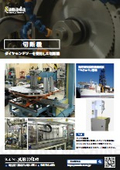


Recommended products
Distributors
At our company, we continue to challenge ourselves to achieve speedy and stable quality through integrated production in-house, including design, manufacturing, assembly, and electrical control for automated machine production. ■ Specification Meetings and Machine Design 【Proposing Clearly in Line with Customer Requests】 We listen to what kind of automation our customers want to achieve and provide optimal proposals based on our experience and technology. ■ Electrical and Control 【Realizing Movements According to Customer Wishes】 Considering ease of use, we design sequence programs and touch panels. By designing and manufacturing control panels in-house, we can also accommodate specification changes. ■ Parts Manufacturing 【Advantages of In-House Parts Production】 By manufacturing parts in our own factory, we thoroughly manage quality, cost, and delivery time. We can respond quickly to sudden design changes and issues during assembly. ■ Assembly and On-Site Installation 【Assembly and Adjustment by Skilled Employees】 Using 3D assembly drawings allows for more accurate assembly and adjustment. We can handle equipment on the scale of 4m x 20m and take responsibility for installation and operation confirmation at the delivery site. ・We also have video introductions available on YouTube.












